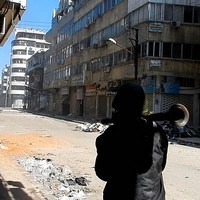As the United States stumbles about in search of a coherent strategy in Syria, one idea that continues to resurface is the establishment of a no-fly zone. Its appeal is easy to understand. Facing a rebel advance in the summer of 2012, Syrian President Bashar al-Assad's military increasingly relied on airpower. As a result, civilian casualties escalated. With no response to the threat from the air, the rebel offensive faltered, and the Assad regime, which seemed on the verge of collapse, turned the tide. For the United States, a no-fly zone seems to provide a way to do something about Syria's humanitarian disaster without directly helping the al-Qaida-linked Nusra Front or pitting U.S. ground forces against the Syrian army.
In the United States, there has been pressure for a no-fly zone from both the political right and left. Conservatives believe that the longer the war drags on, the greater will be the influence of either the Nusra Front if the rebels win or of Iran if Assad hangs on. Liberals advocate the establishment of a no-fly zone to stop or at least diminish civilian casualties. Despite this, the idea has met serious resistance. Opponents contend that a no-fly zone would eat up a significant amount of money at a time when the U.S. military is furloughing civilian employees, cutting force structure, delaying the replacement of equipment and postponing training. Todd Harrison of the Center for Strategic and Budgetary Assessments estimated that the price tag would fall between $1 billion and $10 billion. Any U.S. aircraft lost while enforcing the no-fly zone would amplify the costs even further. Syria’s air defenses and air force, as opponents of the no-fly zone point out, are far superior to those of Libya or Iraq.
Opponents also make the "slippery slope" argument: Since a no-fly zone would involve the U.S. military in combat, once that threshold is passed, it will be easy or even inevitable to sink deeper and deeper into the fighting. Adm. William Fallon, former commander of the U.S. Central Command, expressed concern that after starting with a no-fly zone, American aircraft would end up providing close air support to rebel fighters on the ground as they did in Libya. "If you eliminate one capability of a potential adversary," asked Gen. Martin Dempsey, chairman of the Joint Chiefs of Staff, "will you be inclined to find yourself in a position to be asked to do more against the rest?" Finally, opponents like former Secretary of Defense Robert Gates contend that a no-fly zone would have little or no effect on the war, and thus represent a waste of increasingly scarce defense resources.

